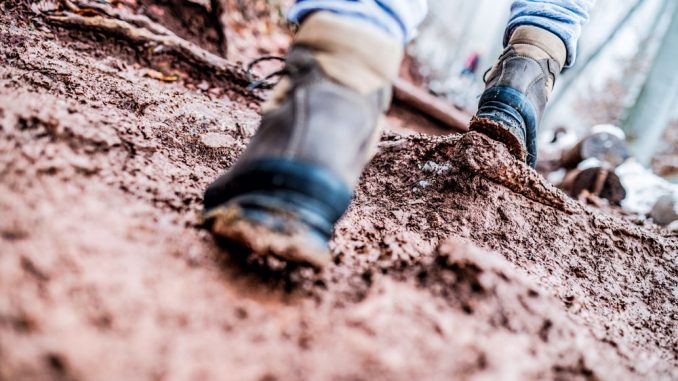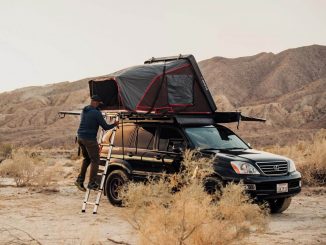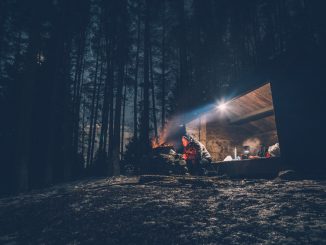
The History And Importance Of Learning How To Track
Not enough has been written on the fascinating art of tracking, even today. Mostly unknown to younger generations, the ability to detect, read and properly interpret human and animal sign and tracks has always played a huge role in the history of mankind.
Even if rightly considered a primitive art, tracking is common to widely divergent areas of the world—from Australia to India, Europe, Africa and the American continents. This skill has been successfully handed down through oral training, some books and the efforts of many schools, institutions and associations that teach tracking fundamentals and, most importantly, point out its benefits.
Certain soft, plain terrains are better for capturing human and animal tracks.
The first documented instance of professional trackers occurred with Germanic tribes around AD 500. Their efforts were dedicated to finding stolen livestock and missing or captured people.
Tracking Through the Centuries
Our ancient ancestors discovered the benefits of tracking, also known as “spooring” in some areas, quite by accident. Their primordial needs consisted of finding food and protecting their communities from attacks by enemies and predators.
As a result, they learned to read the sign on and near the ground to understand where they could more easily hunt animals by following their trails, tunnels, feeding areas, beds and so on. This also introduced them to the concept of patrolling outside the borders of their communities to enhance their safety from predators and other humans.
In the first communities, tracking became crucial to a specific group of people: hunters. We can still see this in remote Amazonian villages, as well as in some areas of the African continent. These communities, such as the Papuasi in New Guinea, the Ayoreo in Paraguay, the Dogon in West Africa and the Himba in Namibia, have developed the maximum level of awareness and observation skills. Not only do these skills allow them to catch their food more easily, they also help forecast and minimize any possible outside infiltration of their villages. These skills are used daily as a natural and consequential part of everyday life.
Trappers gather at the campfire after a long day of tracking in 1860s Canada.
In the same manner, this art continued to endure during the centuries and with remarkable application, especially in the military. During the American Indian Wars (roughly 1609–1918), many Native Americans were employed as scouts. Their tracking abilities played a valuable role, often making the difference between life and death, and not only during battles.
In 1755, Robert Rogers formed the “Roger’s Rangers.” Most of its men were frontiersmen and skilled trackers, thus putting a significant emphasis on the application of tracking in a tactical environment for the first time.
In the same period, trappers made their way into uncharted territories. For example, men such as the legendary John Colter (who is said to be the first white man to pass through the area that now includes Yellowstone National Park) were able to do so thanks to the acuity of their skills and through the direct contact they had with Native Americans.
A U.S. Border Patrol agent on horseback tracks human and drug smugglers.
Much later, the U.S. Army introduced the art of tracking into specific programs during the Vietnam War, as did the British Army in countries such as Malaysia, Rhodesia, Borneo and Cyprus. What we now call “modern visual tracking” came into its own in the late 1960s in the jungles of Borneo.
In 1973, the Selous Scouts Unit was created in Rhodesia. A primary aspect of its operations was the tracking and infiltration of guerrilla forces. Seven hundred men—working in small units of approximately four to six, lightly equipped and carrying mostly ammunition and water—had the task of defending this former British colony from the attacks of local guerrillas, who were supported by neighboring communist countries.
Rangers practice bush patrols in Pendjari National Park in Benin, West Africa. The skill of tracking is mandatory to support efforts against poaching operations in many African parks.
Decades later, the United States rekindled an interest in combat tracking in 2007 with the U.S. Marine Corps‘ Combat Hunter Program, which was created in response to an increased deployment of snipers and IEDs (improvised explosive devices) by enemy forces. The skills of observation and proper interpretation of traces on the ground came to be extremely useful in detecting IED locations.
Ultimately, experience is critical to the successful application of this art. Ab Taylor, a former U.S. border patrol agent and co-author of Fundamentals of Mantracking: The Step-by-Step Method, An Essential Primer for Search and Rescue Trackers, used to say, “Experience is the best teacher when it comes to tracking.”
Current Applications
Tracking is based on necessity, because that’s the overriding principal purpose behind this skill. Today, it’s highly important for many and varied situations, including—
- Search-and-rescue (often conducted with a K-9)
- Anti-poaching operations deployed in most medium-/high-risk areas of Africa and Asia. (Note that many poachers are also trackers.)
- Border Patrol (especially at the U.S./Mexico border)
- Law enforcement
- Forensic agencies (these entities combine tracking with other methods of collecting evidence)
- Wildlife conservation
- Livestock and game surveillance and management
Add to these entities all the people—mostly civilians—who’ve learned how to track in order to reconnect with nature or backtrack if they get lost during a hike, as well as preppers, who consider this a valuable skill for food-gathering and self-defense.
Stepping on wet and rotten twigs could cause one or more breaks.
It’s easy to see that the nuances of tracking are almost as countless as its benefits. For instance, if you’re an outdoor enthusiast like me, you can depend on tracking to find a possible route to get home if the batteries in your GPS run out or you’ve lost your compass. This is just one example I always mention when conducting my basic tracking classes.
Usually, I ask my students how they will behave in an uncomfortable situation. What if—
- You left your map at home?
- Your cell phone is out of power or range?
- You took a wrong turn, and now, you’re lost?
- Darkness comes, and you have no idea how to reach your car?
The most obvious feelings my students have are anxiety or panic. That makes sense; but what if they had a skill they could use to deal with these scenarios in any kind of weather or terrain? Given that option, they become curious—which is critical if you want to learn about, and excel at, tracking. Without an inquisitive mind, you can’t become a proficient tracker!
A perfect example of a “track trap.” Here, we see different human and animal (dog) tracks.
Fundamentals of Tracking
Bob Carrs, author of The Complete Guide to Tracking and The SAS Guide to Tracking, has said that trackers are not a special breed of people. And, as has been said by one of my instructors, Cornelius Nash, tracking is not “voodoo.” It’s a skill that, like many others, is acquired through training and practice.
Successful tracking is based on three elements:
- Observation
- Reading (the signs)
- Interpretation
The so-called “tools of the trade” are essential and within virtually anyone’s reach, so anyone can develop the techniques required to be successful.
They include—
- A measuring device
- A flashlight
- Note paper, pen and pencil
- Tweezers (used to remove any debris on the tracks)
- Casting materials
As mentioned before, experience plays a fundamental role in becoming an effective tracker. Different soils, environments and weather conditions, as well as different personal (mental and physical) conditions, are the main factors that affect the growth and development of your skills. It’s also very important to be humble and learn from your mistakes, as with learning any skill.
Employing an additional light source, such as this small flashlight, allows detection of very small disturbances on the ground (dislodged tiny pebbles, for instance).
The Senses
When we track, we must use all our senses. Although our eyes have the major task, smell and hearing are important too. We track primarily by seeing, hearing and smelling our surroundings.
Think about when you hear a sudden noise. You go into a state of alert. Your brain starts to make deductions, not only about the origin of that sound (“cardinal points”), but also about its source.
“In the first communities, tracking became crucial to a specific group of people: hunters. We can still see this in remote Amazonian villages, as well as in some areas of the African continent.”
Similarly, your nose might detect a distinctive wild animal smell. Then, you run across deer droppings. With each added clue, you’ll know if your reasoning is going in the right direction.
A fresh track left on frozen grassland runs vertically in this photo. We can see the compression of the grass, which reveals the entire surface of the footprint.
And what about the sense of touch? It’s also essential. If you gently touch soil that’s been disrupted by the passage of a human or animal, you might also notice that the soil might be more wet than the surrounding terrain. This would mean that the soil has been “altered” from its natural state, and that portion of ground is, for example, no longer covered by dry leaves and/or small twigs. The terrain can also appear to be a darker color.
Alterations of the Natural State
The passage of animals, humans and vehicles can be classified as “alterations of the natural state” of a certain environment. This is an extremely essential aspect of tracking and, if we think about it, it makes perfect sense.
The signs and the tracks that someone or something leaves can be considered “disturbances,” a common tracking term. They can appear in a variety of forms, and they all depend on the terrain they’ve been left on. For instance—
- Compression of dry leaves
- Flattened grass in a field or lawn
- The transfer of material, such as mud spread by boots
- Pebbles dislodged from their place in the soil
- Broken or damaged vegetation
- Droppings or other materials of any kind left behind or lost
- Hair, feathers or fur
- Sweat and blood
Areas in which one is most likely to spot tracks are called “track traps,” which are mostly sandy, muddy and snowy areas.
In addition, it’s not only important where to look but also how to look. We can’t simply review a specific terrain having absolutely no idea of what we should look for.
First, we should accurately scan the whole area. Then, we look for any signs (as mentioned above) or something that seems “out of balance” near what looks like an entrance through thick vegetation. We move forward from there.
This species of moss (Polytrichum) happens to be extremely resilient. If you step on it, it‘ll take just seconds for it to return to its natural position.
Being methodical and inquisitive—and not settling on the first deduction that comes to mind—will lead you on the path to becoming a novice tracker.
Certainly, there are differences between following humans and animals. While people typically move for a specific purpose, animals behave instinctively. So, if you’re more into animal tracking, I suggest becoming familiar with all the fauna of the area in which you’re tracking. In addition, you need to learn their habits and feeding areas and recognize their tracks and droppings. This is the only way for you to excel at tracking.
The “golden rule” of tracking is to keep the track(s) between you and the light source in order to see as many details as possible.
Practice and experience will do the rest. You’ll be surprised by the successes you’ll achieve in a short time, that is, if you dedicate the required time, effort, humility and passion to this essential bushcraft art.
“Even if rightly considered a primitive art, tracking is common to widely divergent areas of the world—from Australia to India, Europe, Africa and the American continents.”
While watching videos on the Internet can be helpful, remember that tracks are three dimensional, so you’ll gain more skill with “dirt time.” Even better would be to get training from an experienced tracker who’ll be able to correct your mistakes and help you improve more quickly.
Tracking in Urban Areas
Is it possible to find “alterations of the natural state“ in urban environments? Sure. In order to do that, you must be able to analyze every space where tracks can be easily spotted. Good examples are construction sites, which often have sand and dirt, playgrounds, public gardens and any open portion of soil. However, even on hard surfaces, the so-called “transfer” of water, mud, droppings or other materials can be an ideal track trap.
This Art Is Irreplaceable
There are many cases for which the application of the art of tracking has proven to be highly reliable and helped solve well-known crimes (such as the Oklahoma City bombing).
Search-and-rescue team members can tell you about many situations in which their “sign-reading” made the difference in locating a missing person or park rangers detecting poachers‘ activities inside a park or nature reserve. They would also add that learning about tracking changes your mind, thereby helping you become a more focused and analytical person. And, considering the frenetic times in which we live, you might find yourself thankful for the higher level of situational awareness you’ll develop.
The human who left this track in dry leaves slipped, revealing the wet dirt surface beneath the leaves.
No technology can replace good tracking skills. No GPS, tracking applications or gadgets can provide the results that a trained tracker can. Trackers can succeed—even when drones or helicopters fail to find signs of the target’s passage or K-9 teams lose the scent.
“When we track, we must use all our senses. Although our eyes have the major task, smell and hearing are important too. We track primarily by seeing, hearing and smelling our surroundings.”
“No technology can replace good tracking skills. No GPS, tracking applications or gadgets can provide the results that a trained tracker can.”
A clear example of textile material (a thread) caught on the top of an aerial spoor. It reveals the passage of a human being
A good example of “transfer” inside an urban environment. This is an imprint (made with wet tar) of a sneaker.
Measuring devices must be located beside the trackline and in a safe area to avoid any possible contamination of the tracks.
Editor’s note: A version of this article first appeared in the August, 2020 print issue of American Survival Guide.
The post Follow the Trail to Success appeared first on American Survival Guide.





Be the first to comment